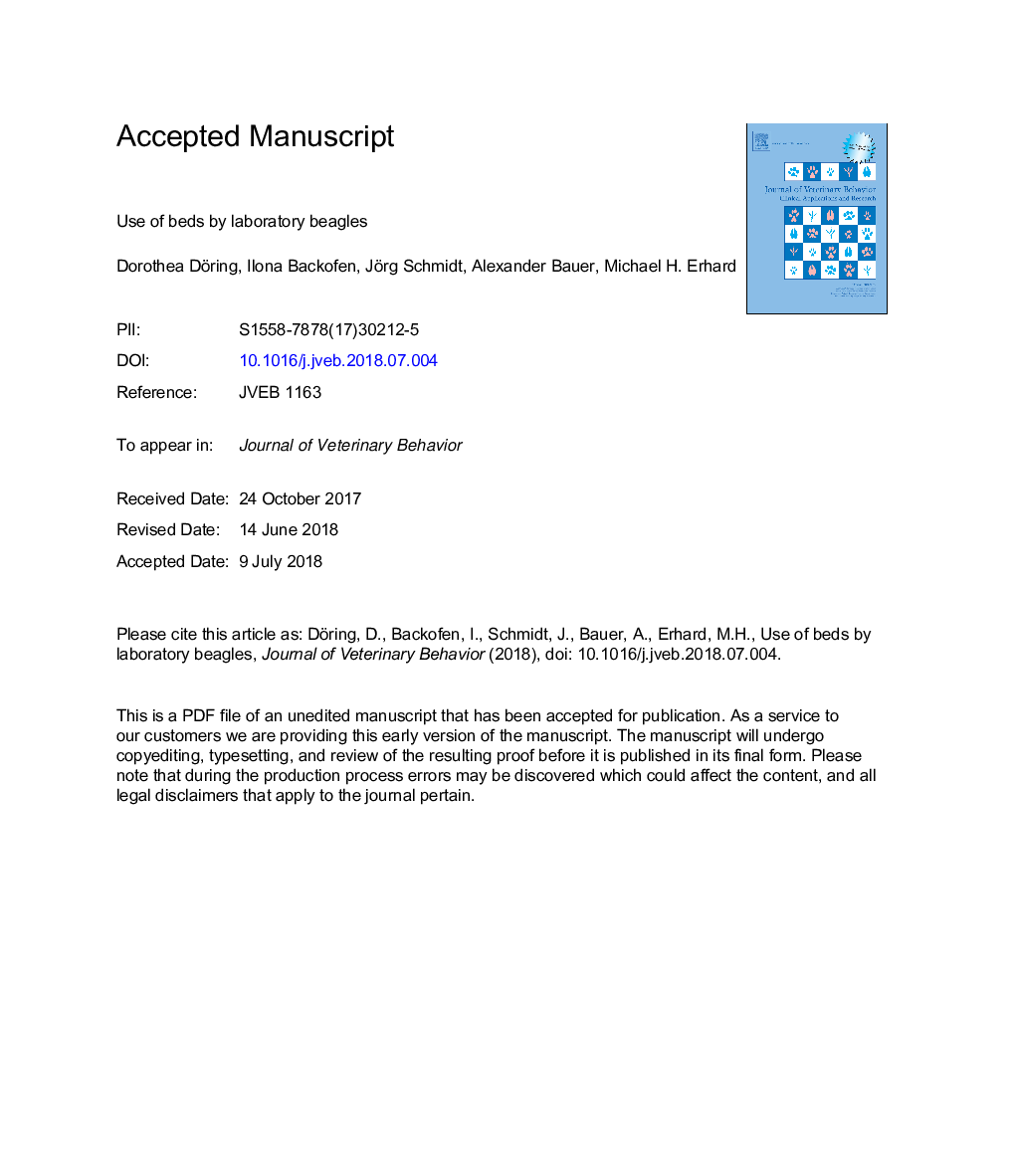| Article ID | Journal | Published Year | Pages | File Type |
|---|---|---|---|---|
| 8956373 | Journal of Veterinary Behavior: Clinical Applications and Research | 2018 | 24 Pages |
Abstract
Comfortable resting areas for laboratory dogs have been recommended by many authors and by the European Directive 2010/63/EU. They are particularly important for geriatric dogs for age- and health-related reasons. Systematic research in this area has not been done. Therefore, we conducted an orientation study on the use of dog beds. In preliminary choice tests with 12 laboratory dogs (three groups), initial information was collected regarding dog bed properties such as size, elevation, and filling material. Subsequently, nine elderly laboratory dogs (three groups) were provided with dog beds filled with fleece blankets, either placed on the ground or elevated. The preliminary choice tests indicated a preference for soft bedding. Further studies would be necessary to confirm our preliminary results with a larger sample. The herein observed elderly dogs intensively used the resting places, especially at night, and rarely slept on the floor. The beds were used on average for 83% of the 10 hours dark phase when located on floor level. In contrast, beds that were elevated at a height of 30Â cm were used 21% of the 10Â hours dark phase. According to the results, we recommend a padded, soft bed which is easily accessible, especially for elderly dogs. Because of differences in preference among the groups, we further recommend providing a variety of options so that the animals have a choice.
Keywords
Related Topics
Life Sciences
Agricultural and Biological Sciences
Animal Science and Zoology
Authors
Dorothea Döring, Ilona Backofen, Jörg Schmidt, Alexander Bauer, Michael H. Erhard,
